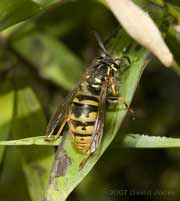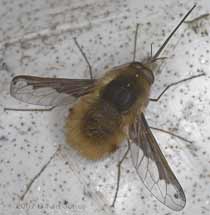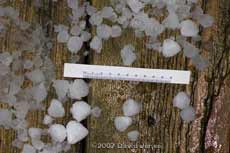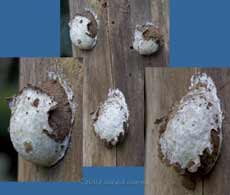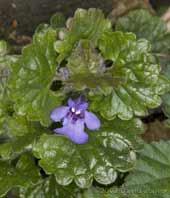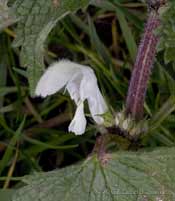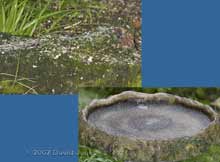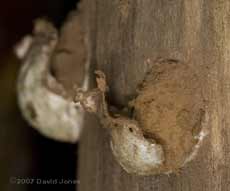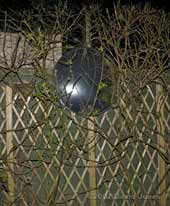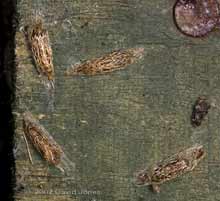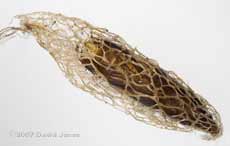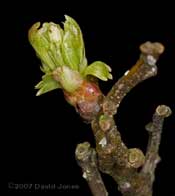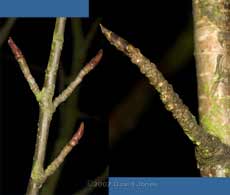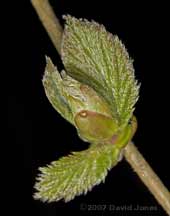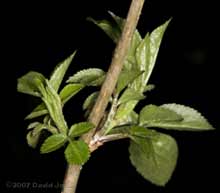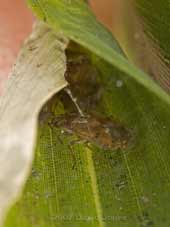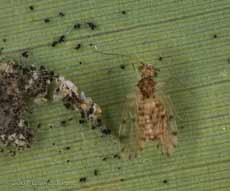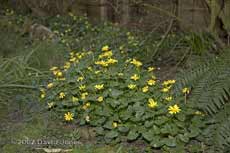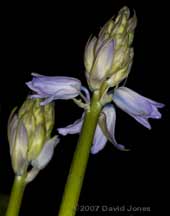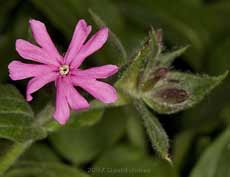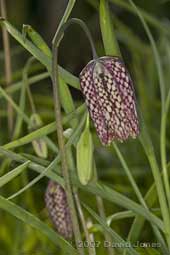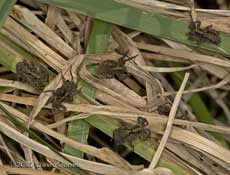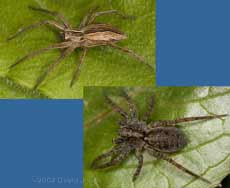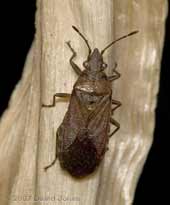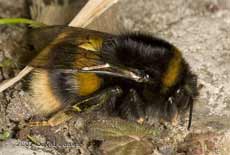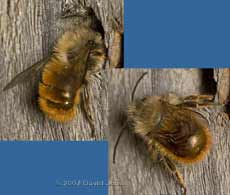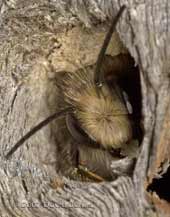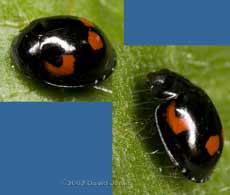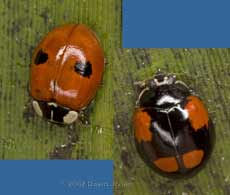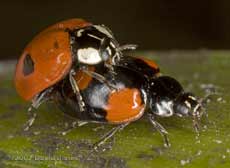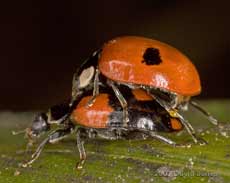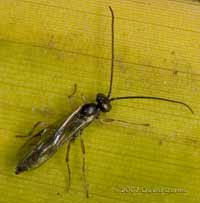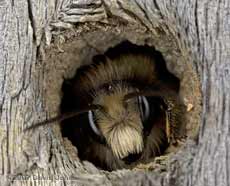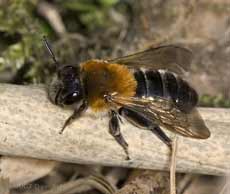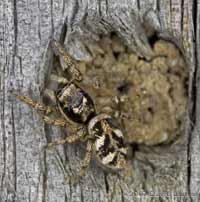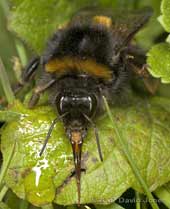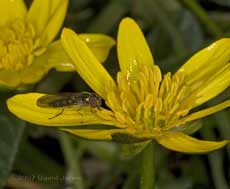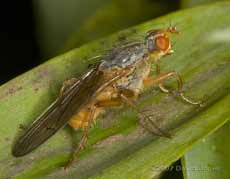Go to the last entry on this page .....Go to previous entry16 March - That early Spring is coming to an end. Yesterday started with the temperature dipping to just 2C and then not quite getting to 12C for much of the afternoon. Today it reached 13C, but only briefly. The forecast is that it will turn colder as we head into next week, and there is even talk of snow! I wonder how many insects that have come out of hibernation will be caught out by the change.
There are bumble bees buzzing about just about all the time at the moment, and yesterday and again today I saw a wasp queen in the garden, using the bamboo (of course!) to bask in a period of sunshine, and also lapping up honeydew.
I'm having a bit of a weary time at the moment. Much of my time in the last two days has been trying to organise the House Martin nestbox cameras, and it seems to be taking ages to get just a bit done - and I still haven't updated the pond diary yet!
17 March - Well, the temperature crept up a degree today, reaching nearly 15C, and it was mild last night, only dropping to 8C, so we are still hanging on to Spring.
I have only seen this insect in the garden a few times previously, in 2004, 2005 and 2006, each time in April. Perfectly harmless, the long proboscis that gives it a threatening appearance is used to suck nectar. Its larvae, on the other hand, attack solitary bees and wasp larvae that are in underground nests.
As for the House Martin nests, I hope to get those put back up tomorrow.
19 March - Yesterday we lost the Spring-like weather as cold winds came in from the north-west making it feel colder than the temperature which struggled up to 10C.
The picture shows what I mean. Many of the lumps were quite angular in shape (based on snow crystals?), up to around 1cm across, and were easily squashed. They melted very quickly. The shower that brought these was accompanied by claps of thunder. A search on the internet suggests that these lumps are called Graupel (meaning 'snow pellets) - for an explanation visit here.
I took a few pictures for the diary today. The first is of a fungus that has developed on a decaying conifer log. About a week ago three white domed structures developed on the side of the log (I should have photographed them but didn't!). The largest structure is about 2x3cm and protrudes about 13-15mm out from the wood. Today the white covering has started peeling back to expose brown tissue - I assume that spores will be released form this. *Not a fungus but a slime mould - see entry for 22 March*
Two more plants in bloom were spotted today. The first is the diminutive flower of a Ground Ivy (Glechoma hederacea),
and the second was another plant from the same Labiate family, a White Dead-nettle (Lamium album).
It has been overcast, and very dim all day, and this morning we had a period of light snow, although, as the pictures show I was hard pressed to find enough to photograph - just a sprinkling on a log and a textured surface to the thin ice cover of the birdbath. The rest melted on contact with surfaces.
While unable to identify the organism, Mike learned that they are very likely to be the fruiting bodies of a slime mould rather than a fungus. When touched, the extremely fine brown spores just pour out.
Slime moulds are curious organisms. This afternoon I had time to find out a bit more about them, and now suspect that the one on the log could be a slime mould called Reticularia lycoperdon, or at least a closely related species. In fact, I'm wondering if the name reflects the similarity between the colour/size of the spores and Lycopodium powder (itself the spores of Lycopodium clavatum - stag's horn club moss) that I used in School science lessons. The complete structures, including the developing spores are called Aethalia, and the white covering or crust is the peridium, which bursts open to release the mature spores. The spores are fascinating. They can remain viable for years, and when they germinate they form mobile 'swarmers', singled celled and with a flagellum that allows them to swim, and they can also develop pseudopodia (much like amoeba). At this stage it seems that they can feed on bacteria. Eventually a pair of the swarmers will fuse together to form a zygote, and from this the next generation of slime mould will develop. This itself is a strange structure, creeping over surfaces, still feeding on bacteria, and often organising itself into fan-shaped networks in some species.
24 March - A generally dull day, with grey skies and low light levels this afternoon. While it was dry during the day there is drizzle falling tonight.
The picture shows the fence, the vine and a convex mirror that acts as a centrepiece, providing a patch of sky against the backround of the conifers. Look to the left and you can see an old Blackbird nest form a couple of years ago.
I needed to remove the old mirror to replace it and found that hidden behind it, attached to the fence, were numerous small 'net bags' containing pupae. Each one measured just over 5mm, with the silk net a millimetre or two longer.
A closer look at one of the structures suggests that the pupa is probably a chrysalis of a moth. From what I could see, all the pupal cases were empty.
Remembering that the Vine is affected by large numbers of leaf-mining larvae, and I can't help but wonder if these were the pupae of the same insects.
At the other end of the garden, one of the real signs of Spring appeared as the buds on the Hawthorn started to burst today.
Looking at the other trees growing in the garden, the Birch (right), Rowan (left) and the Willow still have tightly closed buds.
At the side of the garden, next to the Ivy tree, the two small Hazel (cob nut) saplings have been coming into leaf over the five days,
and the Elder plants ( I know - it's not a tree!) are getting quite green now, the buds having started bursting in the middle of January.
25 March - The next step into Spring as the clocks go forward to British Summer Time, and a day of occasional sunshine, giving a high temperature of over 11C, but also overcast conditions in the morning and late afternoon/evening.
For me it's been one of those very sleepy days when my CFS takes charge, and I only managed to get out with my camera for a short time, enough to find this bug (and at least one other) tucked into a folded leaf on the bamboo next to the workshop shed, and the Birch tree. Being adjacent to the Birch is significant as I think they are Birch Catkin Bugs (Kleidocerys resedae), a species that I usually see here in the summer.
Also, on the undersides of the leaves of the same bamboo plant, the Bark-flies (bark-lice) are very much in evidence again, with quite a few very small nymphs about which I shall have to photograph again.
I had more or less given up on being successful with foxgloves in the garden. Despite putting in plants and scattering seed over the last five years at least there has been no sign of new plants appearing, until now - we have a single foxglove plant that has appeared near the Birch tree. I shall have to watch out for others.
28 March - Over the last two days we have had 'real' Spring weather, with chilly mornings (I saw a touch of frost on the north side of my neighbour's shed roof, but our thermometer stayed a few degrees above freezing) and then sunshine through much of the day. Yesterday the temperature reached 17C, but hazy sunshine meant that today was a couple of degrees cooler. The good weather is reflected in the number of things to report on today.
The Forsythia is in bloom, and amongst the wild flowers the Cowslips, Dandelions, Marsh Marigolds, and especially the Lesser Celandines are doing well.
Yesterday they were joined by the contrasting colour offered by the first Bluebells of the year.
Today they were joined by single blossoms of Red Campion,
and Snake's-head Fritillary.
In a few places they congregate in sunny spots. While six spiders are visible in this spot, there were at least twice that number in the area around it.
The spiders that I could see seemed to be of the same species, but for just one exception amongst the sunbathers.
Another bug made an appearance today, on the same area of grass that the spiders were photographed on. It is similar in appearance to Ceraleptus lividus, but I'm not at all sure about that being the correct ID.
I was able to approach quite closely to this Buff-tailed Bumblebee (Bombus terrestris), although it soon took up a defensive posture, raising two legs into the aid on the side facing me.
Today I also saw a Red-tailed Bumblebee in the garden for the first time this Spring.
The sunshine meant that there was more activity around the bee hotels, with several of what I had thought were Tawny Mining Bees (Andrena fulva) visiting. This one seemed to be taking a special interest in one hole,
and as it flew off, I was surprised to see a second bee emerge from the darkness just enough for me to capture this picture of its hairy face before it retired back into the hole. I think I may need to spend some more time to be more sure of the identification.
When I took a quick look at the pond this afternoon I found this tiny ladybird floundering on the surface. It's a Pine Ladybird (Exochomus quadripustulatus), measuring not much more than 3mm in length. Despite being a very common species, I only see them occasionally in the garden. Notice that the wing case has an up-turned rim, a feature that helps distinguish it from the similar coloured ladybird in the next picture.
A much more frequent sighting is the larger 2-Spot Ladybird, and these two very different vaieaty of the same species ( and measuring about 5mm long) were on adjacent bamboo leaves when I first saw them this afternoon. Like the bumblebee, they seemed very lethargic as I took these photographs.
I'm not sure how welcome the advance was, because the black ladybird spent the next couple of minutes dashing around in circles as though it was trying to shake the other off!
This reaction seemed to cause the red ladybird to secrete a drop of yellow liquid from a leg. This liquid is oily, has a foul smell, and is usually produced as a warning when the ladybird is disturbed or handled.
These have been around over the last couple of days but were impossible to get close to in the higher temperatures.
I'm afraid it's been one of those days when I struggled to stay awake, so the large images will have to wait until tomorrow (hopefully).
30 March - On a dull and largely wet day there are no new photographs from the garden, but I have managed to catch up with adding the large images from the last two days. This morning I had an e-mail from Philippe Moniotte in Belgium (one of those people to whom I am often grateful for assistance given) about the solitary bees. He thinks that they are likely to be Red Mason Bees (Osmia Rufa). After a closer look at my photographs I'm inclined to agree, although I think I need to take some more close-up photographs to be sure.
31 March - (large images to follow) - The month is coming to an end on a fine but blustery note. The sun has struggled to break through for much of the day, and although hazy sunshine this afternoon helped the temperature up to 14C, a northerly wind, with gusts frequently over 25mph have made it feel cooler.
I did see one other type of Solitary bee today. This Andrena heamorrorrhoa (I think!) landed briefly on a dead leaf, presumably to soak up some energy from the very hazy sunlight.
Having recorded the hunting spiders that I'm seeing on the ground at the moment, I must add this little character that we see every year, hunting around the bee hotels. I think it is a Salticus scenicus, sometimes called a Zebra Spider because of its stripes. Here you can compare its size with the sealed 7mm hole behind it. My spider guide suggests that it will readily capture aphids offered to it using a fine forceps - I must try that!
There were very few Bumble Bees about today, but I nearly trod on this Buff-tailed Bumblebee as it wandered on the footpath, climbing up onto plants and falling off repeatedly. Eventually it found a spot that was both sheltered from the wind and in sunshine. There, it readily accepted a feed of honey and water, giving me a chance to photograph its long tongue in action. A short while later it flew off out of the garden.
On the business of insects feeding, I only saw a couple of insects visiting flowers all day, and this hoverfly was one of them.
There were several true flies perched on Bamboo leaves from time to time, but the only one I decided to photograph was this individual with its very noticeable colours. I cannot be sure of its identification, but with the greyish thorax along with the yellow hairs, it could be a female Yellow Dung-fly.
Click on images to see larger versions |
|
